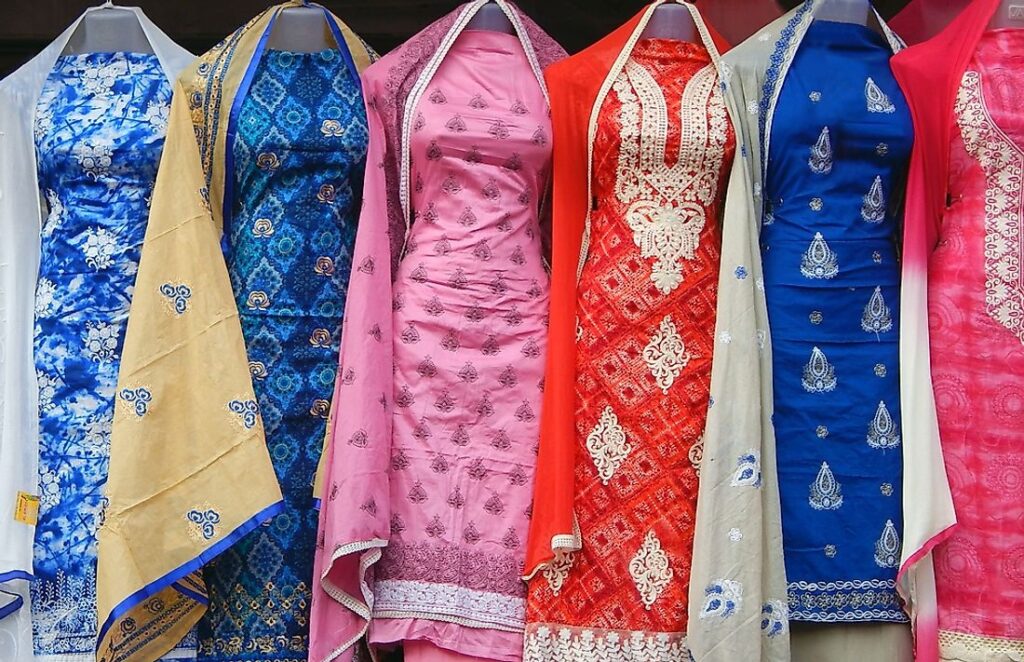Pakistan is a country rich in history, culture, and tradition, and one of the most vibrant representations of its heritage lies in its clothing. Pakistani clothes are not just garments; they’re a blend of artistry, cultural symbolism, and regional diversity, reflecting centuries-old traditions that have evolved over time. This article explores the distinctive styles, intricate craftsmanship, and cultural significance of Pakistani clothes, highlighting their popularity within Pakistan and around the world.
Traditional Pakistani Clothing Styles
Pakistani clothes vary widely across regions, influenced by the diverse ethnic groups within the country. The most prominent styles include the shalwar kameez, lehenga choli, kurta, and sherwani, each with its unique touch of local artistry and craftsmanship. Here’s a closer look at some of these timeless styles:
1. Shalwar Kameez
The shalwar kameez is the national dress of Pakistan and is worn by both men and women. The shalwar (loose trousers) and kameez (long tunic) combination is not only comfortable but also versatile, coming in various fabrics, colors, and designs. Women’s shalwar kameez can be heavily embroidered for formal wear or kept simple for casual, everyday wear. For men, the shalwar kameez is generally straightforward but can be adorned with embroidery or paired with a waistcoat for a more formal appearance.
2. Lehenga Choli
A traditional outfit often worn during weddings and festive occasions, the lehenga choli consists of a long skirt (lehenga) paired with a fitted blouse (choli) and a dupatta (scarf). The lehenga choli is especially popular in Pakistan’s Punjab and Sindh regions, often crafted with heavy embroidery, sequins, and intricate beadwork. This outfit is known for its elegance and is a go-to choice for brides.
3. Kurta Pajama
The kurta pajama is a traditional outfit worn by men across Pakistan. The kurta is a long shirt that falls below the knees, paired with pajama-style pants. For casual wear, it can be simple and made from light fabrics, while more formal occasions call for embroidered or adorned kurtas paired with elegant pajama trousers. The kurta pajama is especially popular during religious festivals like Eid.
4. Sherwani
The sherwani is a formal coat-like garment that symbolizes elegance and is often worn during weddings and formal gatherings. Traditionally, sherwanis are long coats worn over a kurta and pajama, often adorned with intricate embroidery and embellished with traditional Pakistani motifs. These garments are crafted from luxurious fabrics, making the sherwani a staple for grooms in Pakistani weddings.
Regional Variations in Pakistani Clothing
Pakistani clothes are diverse across different regions, each bringing unique elements to traditional attire. The clothing styles reflect the cultural heritage of each province:
Punjab
Punjabi clothes are known for their vibrant colors and intricate embroidery. Women often wear shalwar kameez with phulkari (floral) embroidery, while men may wear simple or embroidered kurtas paired with turbans.
Sindh
Sindhi clothing is characterized by ajrak, a unique block-printed shawl with geometric patterns in red, black, and white, often worn with the shalwar kameez. Sindhi embroidery, which uses bright threads and mirror work, also stands out as an integral part of the region’s attire.
Khyber Pakhtunkhwa
In Khyber Pakhtunkhwa, shalwar kameez is also the primary attire. Men often wear pakol (woolen hats) or turbans, while women’s dresses are modest, typically adorned with local embroidery patterns that signify regional identity.
Balochistan
Balochi clothes reflect the rugged, earthy colors of the province. The Balochi dress for women includes long, flowing tunics with wide trousers and heavily embroidered yokes, cuffs, and hems. Men’s clothing in Balochistan includes loose, flowing garments with simple yet functional designs.
Pakistani Clothes in Modern Fashion
Pakistani fashion designers have skillfully incorporated traditional attire into modern fashion, blending tradition with contemporary design elements. Designer boutiques in Pakistan are popular for producing shalwar kameez, sarees, lehengas, and gowns that merge local and global trends. Pakistani clothes are highly sought after in South Asia and among South Asian communities worldwide, as designers bring a fusion of eastern and western styles through unique cuts, innovative designs, and modern color palettes.
The rise of Pakistani fashion weeks and global showcases has propelled these traditional clothes onto international runways. Designers like Hassan Sheheryar Yasin, Deepak Perwani, and Sana Safinaz have redefined Pakistani clothing, making it popular among international audiences.
Fabrics and Embellishments
The beauty of Pakistani clothes also lies in their fabrics and embellishments. Traditional Pakistani outfits often feature luxurious fabrics such as silk, chiffon, lawn, and velvet, ideal for various occasions and weather conditions. Embellishments like zari (metallic threadwork), gota (lace applique), and tilla (gold and silver thread embroidery) enhance the appeal of these garments, giving them a royal look.
In casual wear, lawn suits—a popular choice during Pakistan’s hot summers—are crafted from lightweight cotton fabric, adorned with floral prints or light embroidery. In contrast, for winter attire, materials like wool and khaddar are used to make shalwar kameez, kurtas, and shawls that provide warmth without compromising style.
The Cultural Significance of Pakistani Clothes
Pakistani clothes are more than just a fashion statement; they hold deep cultural significance. Each traditional garment tells a story of Pakistani heritage, values, and traditions passed down through generations. Whether it’s the elegant shalwar kameez, the timeless saree, or the elaborate lehenga choli, each piece of clothing is a symbol of pride, modesty, and cultural unity.
In Pakistani society, clothing also serves as a form of identity. For example, wearing a shalwar kameez during religious celebrations or formal gatherings reinforces a sense of cultural pride and collective identity. Bridal wear, often in hues of red and gold, represents joy, prosperity, and tradition, while certain colors and embroidery styles are used to indicate different regions within Pakistan.
Conclusion
Pakistani clothes represent a vibrant tapestry of cultural history and regional diversity. From the colorful shalwar kameez to the elaborate sherwani, each outfit is carefully crafted to celebrate tradition and express individual style. Pakistani clothes have not only remained timeless within the country but have also gained popularity on an international scale, thanks to the creativity of designers who blend heritage with modern aesthetics. Whether worn in everyday life or displayed on global runways, Pakistani clothes continue to symbolize elegance, heritage, and the rich cultural legacy of Pakistan.



